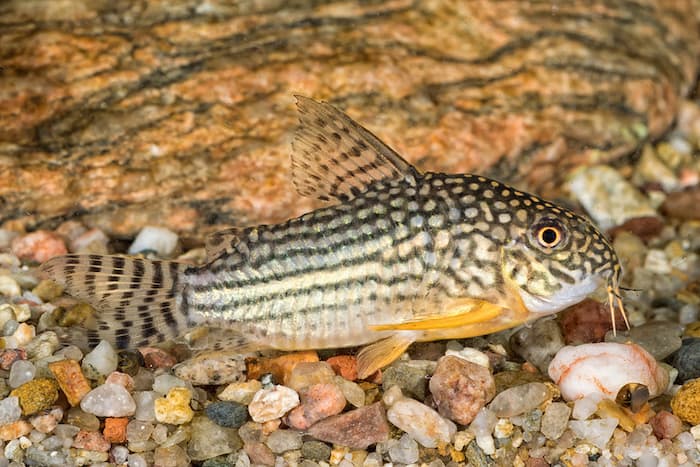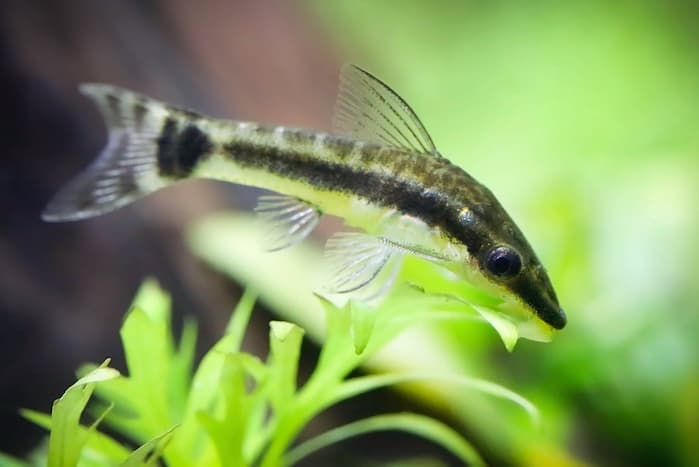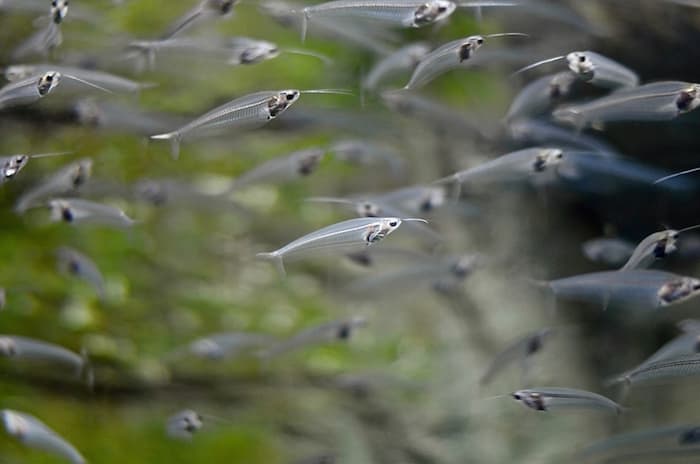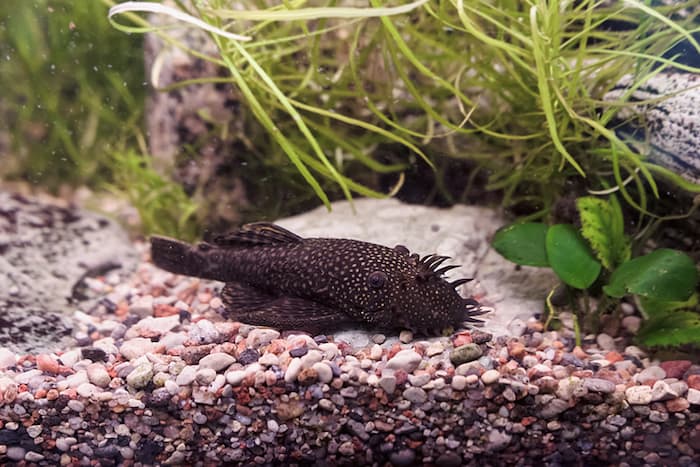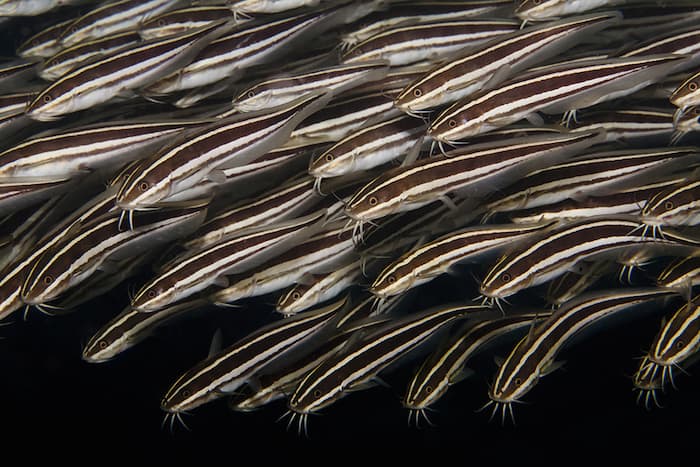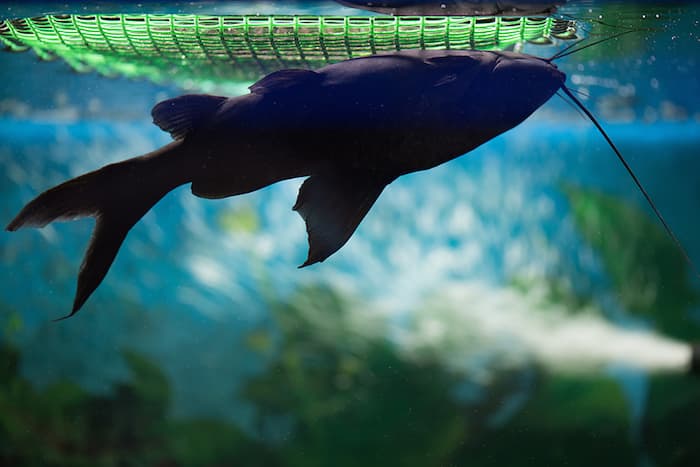Choosing fish for your aquarium can be difficult. There are plenty of various kinds to choose from, but not all of them make good pets.
Catfish are a common choice among both new and seasoned aquarium owners due to their distinct appearance and fascinating behaviors. Choosing the appropriate type of catfish, on the other hand, is critical. We discuss our favorite kinds of freshwater catfish for aquarium owners of all levels in this guide.
Cory catfish
Corydoras Catfish is a perfect fish species to own as a pet. Cories are a smaller type of pet catfish that rarely grow more than 2 or 3 inches in length, making them ideal for aquariums as little as 20 gallons. In combination with their modest stature, Cory Catfish are also beginner-friendly, even though they have a few specific needs.
Cory Catfish must usually be housed in groups of six, or perhaps more, because they are a schooling species. Raising a Cory alone will almost inevitably result in significant stress, which is something you should avoid with your fish. You must also be conscious of some essential maintenance requirements for your Cory catfish.
Despite the fact that cories aren’t particularly delicate fish, strive to maintain your aquatic environment as consistently as possible.
Cory Catfish are omnivores, which means they thrive on a variety of vegetable and meat-based foods. Hikari Algae Silicon wafer and Omega One Freeze-Dried Bloodworms are good examples of foods that Cory catfish eat when kept as pets.
Otocinclus Catfish
Oto Catfish enjoy aquariums with a lot of plants, but that’s not all they require. Otocinclus Catfish are an excellent option for someone planning to put up a planted tank, particularly if you want to get into aquascaping, due to their calm temperament and persistent taste for seaweed. They have a flair for removing algae from aquarium panes and plant foliage without harming the plants.
Ensure to provide lots of driftwood for your Otos to utilize as shelter to keep them as stress-free as conceivable. Furthermore, Oto Catfish enjoy aquariums with a moderate amount of water circulation.
Oto Catfish are herbivores. Therefore they need a plant-based meal, with algae supplying the majority of it. I recommend tossing in a few algal flakes every now and then to ensure they’re eating sufficient food.
Glass Catfish
As you might presumably guess, the Glass Catfish, also known as the Ghost Catfish, is a wonderfully unique animal. These fascinating indoor catfish are fantastic communal fish that give any freshwater tank a distinctive look due to their entirely transparent skins.
Glass Catfish, like Cories, is a schooling fish. It is advised to raise them only if you have space for 5 or 6 of them, as they, like numerous other schooling animals, become withdrawn and anxious when left alone.
Another distinguishing feature of the Glass Catfish is that it is a low-light creature that prefers darker aquariums. However, they thrive fine in typical community aquariums with lots of caves and living plants for shelter.
Glass Catfish are vulnerable to changes in water temperatures and like mildly acidic waters with temperatures in the upper 70s. However, they adapt to a variety of situations. Glass Catfish is an omnivorous fish that thrive on a combination of high-quality wafers and freeze-dried blood worms.
Bristlenose Pleco
The Bristlenose Pleco is among the most popular pet catfish, and with a definite cause: they are simple to maintain, peaceful, and excellent algae feeders. Bristlenoses are small by Pleco measures, being about 4-5 inches long.
Bristlenose Plecos are relatively simple to care for and can thrive in a variety of environments. Furthermore, feeding these catfish is a pleasure because they will search the tank base for crumbs of leftover food, which will help keep your aquarium neat and tidy.
However, unconsumed crumbs are generally inadequate to feed a fully developed Pleco. Frequently feed algae wafers, high-quality flakes, or similar plant-based diets. Bristlenose catfish also prefer squash, Cucumber, and Zucchini.
Pictus Catfish
The Pictus Catfish is a renowned aquarium catfish breed known for its long antennae and distinctive silver color. Pictus Catfish, despite being a pleasant communal species, should not be housed with fish that are tiny enough to become convenient prey.
Pictus Catfish are generally below 5 inches long, which is little by catfish measures. They love to be kept in groups of four or five while they are young (2-3′′). However, when Pictus Catfish mature, hostility may develop.
Pictus Catfish are voracious feeders who will eat almost any food presented to them. However, because they’re omnivorous by existence, they must be given a variety of plant products and meat-based diets, such as high-quality flake meals and freeze-dried bloodworms or frozen brine shrimp.
Striped Raphael Catfish
The Striped Raphael Catfish is among the largest catfish varieties of catfish, reaching 7-10 inches long and only suitable for aquariums with a capacity of 60 gallons or more.
The Raphael Catfish is a calm creature that excels in community and hostile predator aquariums, notwithstanding its size. The Raphael Catfish is big enough to defend itself from more hostile species, even though it is calm and relatively mild. As a result, the Raphael catfish is a versatile choice that can thrive in a wide range of aquariums.
The Raphael Catfish, like most catfish, is an omnivore and needs a combination of plant-based and meat-based meals to thrive. A fantastic variety is high-quality pellets with meaty meals, such as bloodworms or brine shrimp.
Upside Down Catfish
These excellent small pet catfish devote the majority of their energy floating around and skimming the surface entirely upside down, as their name indicates. Fish tanks with broad-leaved plants are ideal for Upside Down Catfish.
The Upside Down Catfish is highly similar to the Cory Catfish in terms of size, structure, and attitude. Upside Down Catfish are omnivores who thrive on a combination of flake meal and flesh, such as frozen brine shrimp or freeze-dried bloodworms
Bumblebee Catfish
The Bumblebee Catfish is ideal for tiny to medium-sized aquariums, achieving a size of only 3 inches. These aren’t fishes that blend in with the background, despite their small size.
This species, like many of the tank catfish, enjoys surroundings with lots of vegetation and decorations. They prefer to hide among the driftwood, rocks, and plants.
Taking good care of Bumblebee Catfish Isn’t difficult for the most part. These are resilient fish that thrive in a variety of tank settings. You should have no issues as long as the temperature is between 70 and 77 degrees Fahrenheit and the water is balanced.
Do your study before adopting any fish to a new or existing tank. Ensure all new arrivals are adequately quarantined and that all fish have sufficient space and are provided with adequate food.
We hope you’ll be satisfied keeping freshwater catfish in your household aquarium if you study the standards of care for each breed and follow them.
Related Reading

